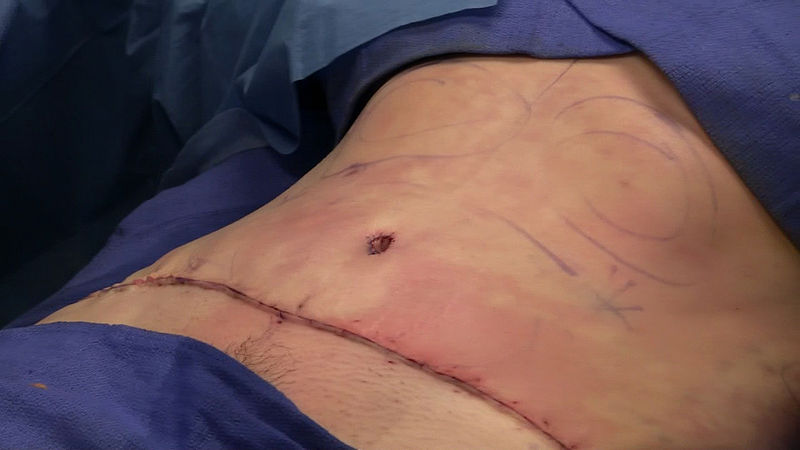Rough skin after fractional laser treatment can be alarming for many patients. In this guide, we’ll explore the causes, remedies, and preventative measures for this common side effect.

Table of Contents
Causes of Rough Skin After Fractional Laser
The sensation of rough skin after fractional laser procedure is not unusual and can be likened to the texture of sandpaper. This is a direct result of the micro-injuries inflicted by the laser during treatment. These minute injuries stimulate the skin’s natural healing process, leading to collagen production.
However, as the skin initiates its recovery, dead skin cells surface, resulting in a temporarily rough texture. It’s crucial to understand this is a typical and expected part of the skin’s regeneration journey. The American Society for Dermatologic Surgery (ASDS) provides a comprehensive breakdown of post-laser effects, ensuring patients have realistic expectations.
Managing Rough Skin After Fractional Laser
The period immediately following your fractional laser treatment is pivotal in determining the quality of your results. Here’s a more in-depth look at post-treatment skin management:
Moisturizing: Keeping the skin hydrated can’t be overemphasized. Post-treatment, the skin might feel dry and tight. By applying a hydrating lotion or cream recommended by your dermatologist, you ensure that the skin remains supple, reducing potential irritation and enhancing the healing process.
Confirm with your dermatologist if you can use this Cetaphil Body Moisturizer listed on Amazon.
Avoiding Harsh Products: The skin is exceptionally vulnerable after laser treatment. Products with retinoids, glycolic acid, or salicylic acid can be too harsh and might lead to adverse reactions. Always consult your dermatologist before reintroducing these products into your regimen.
Protecting from Sun: Post-laser skin is more susceptible to sunburn. Direct sun exposure can lead to hyperpigmentation. Therefore, wearing a broad-spectrum sunscreen, even when indoors, is essential. The American Academy of Dermatology (AAD) provides more insights into the importance of sun protection after laser treatments.
Check out this Aveeno Protect + Hydrate Moisturizing Body Sunscreen Lotion on Amazon.
Duration of the Texture of the Rough Skin After Fractional Laser
The timeline for the resolution of the texture of the rough skin after fractional laser treatment can differ, influenced by factors like individual skin type, the laser’s intensity, and aftercare. In general terms, most patients observe their skin returning to its smooth state within 7 to 10 days.
However, there are instances where this period might extend to two weeks. It’s essential to remain patient and refrain from aggressive skin interventions during this period.
Check out these other articles…
How Long Does It Take to See Results from Fractional Laser?
How to Take Care of Skin After Fractional Laser: Easy Guide
Does Fractional Laser Tighten Skin? Comprehensive Answer
What to Avoid After Fractional Laser: Comprehensive Guide
How Long Does It Take to Heal from Fractional Laser?
Preventive Measures for Future Treatments
Enhancing the outcome and minimizing side effects of future treatments hinge on effective pre and post-treatment care. Here are in-depth guidelines:
Consultation: Always start with a comprehensive discussion with your dermatologist. Understanding your skin type, the treatment’s intensity, and setting realistic expectations is pivotal.
Follow Pre-Treatment Instructions: Different clinics might have specific protocols for skin preparation. This could range from avoiding sun exposure, ceasing certain medications, or even prepping the skin with particular products. Adherence to these guidelines can significantly influence your results.
Post-Treatment Care: Always follow the guidelines given post-procedure. This might include the application of certain products, sun avoidance, and moisturization protocols.
Additional Tips for Optimal Recovery
Beyond the fundamental care guidelines, there are additional measures you can take to enhance your skin’s recovery and ensure the best results post-treatment:
Stay Hydrated: Drinking ample water supports skin hydration from within, facilitating faster healing.
Avoid Picking or Scratching: As the skin heals, there might be a temptation to pick at peeling skin or scratch areas that feel itchy. Doing so can lead to scarring or prolonged redness.
Cold Compress: If you experience swelling or discomfort, applying a cold compress can offer relief. Ensure the compress doesn’t directly touch the skin; use a cloth as a barrier.
Minimal makeup: It’s advisable to avoid heavy makeup for a few days post-treatment to let the skin breathe and recover.
Remember, each person’s skin reacts uniquely. While these guidelines are based on general observations and expert recommendations, it’s essential to listen to your skin and adjust your care routine accordingly.

